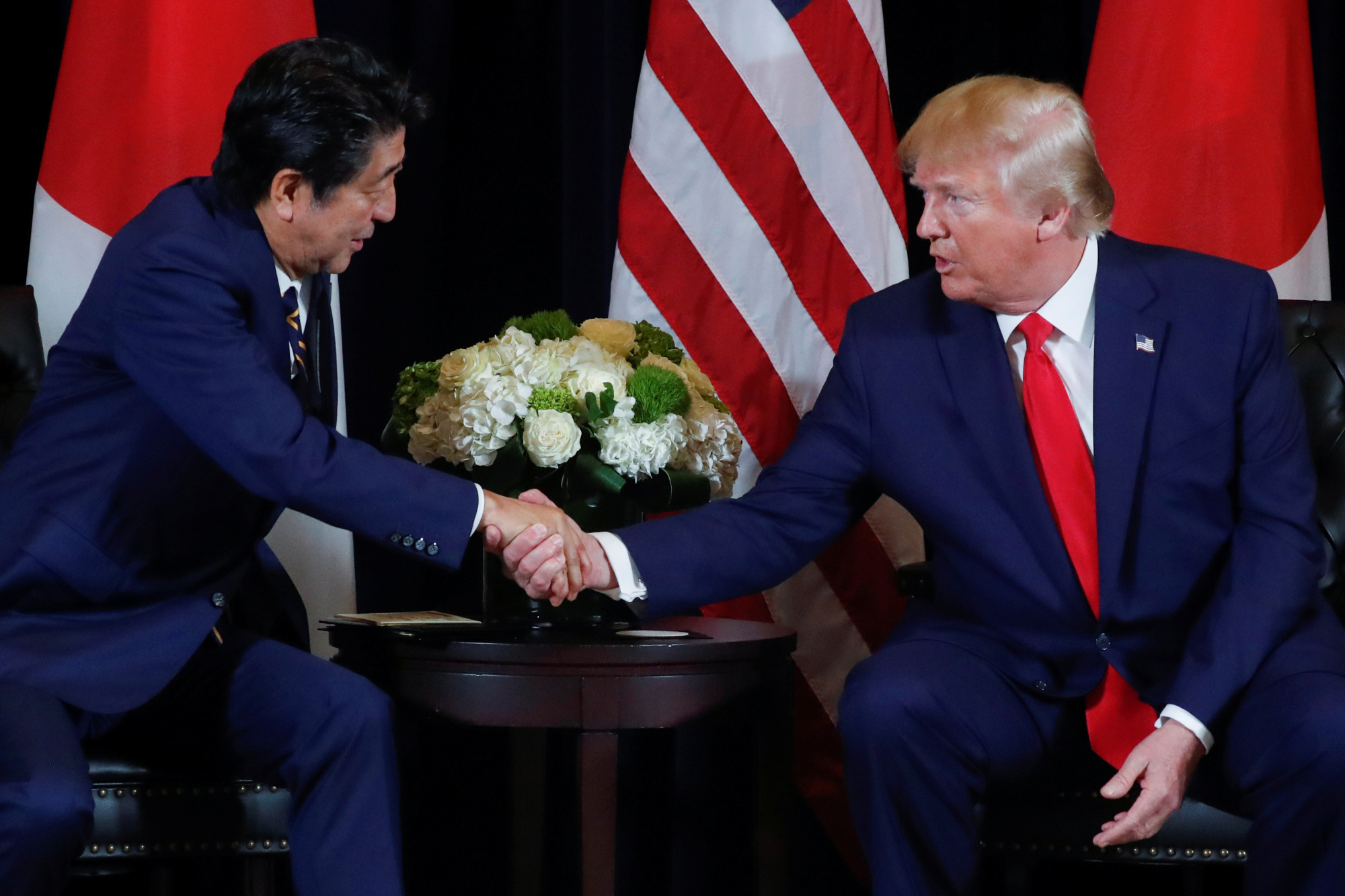Japan and the United States have just concluded a trade agreement that focuses narrowly on agricultural products and digital trade. At the Japan-U.S. summit held on Sept. 25, the mood of the two leaders looked apparently different. U.S. President Donald Trump appeared extremely pleased with the agreement because positive feedback received from various domestic agricultural and livestock groups might help boost his re-election bid.
By contrast, Prime Minister Shinzo Abe had to repeatedly emphasize that the agreement was a win-win deal benefiting Japan as well. Why did Abe need to do that? This was partly because the joint statement was vague about the treatment of Japan's export of cars and auto parts. Not only were tariff cuts postponed, but also an exemption of the 25 percent additional tariffs implementable on national security grounds pursuant to Section 232 of the Trade Expansion Act of 1962 was not officially confirmed. Another reason was that the reaction from the Japanese public remains ambiguous and confused while concerns have been raised from domestic agricultural and livestock groups who fear losing market share to more competitive producers from abroad.
The U.S. trade representative released a "fact sheet" on the trade agreement, which reveals that the agreement is apparently more beneficial to the U.S. than Japan. It is appealing to U.S. agricultural sector voters because Japan will cut import tariffs on beef, pork, wheat, dairy products, wine and other products to the level secured under the Comprehensive and Progressive Agreement for Trans-Pacific Partnership (CPTTP) that took effect in December 2018. As a result, U.S. exporters hope to recover their lost market shares quickly from Australia and Canada, as well as from Europe after it gained comparative advantage due to the Japan-EU economic partnership agreement that came into effect in February this year.



















With your current subscription plan you can comment on stories. However, before writing your first comment, please create a display name in the Profile section of your subscriber account page.